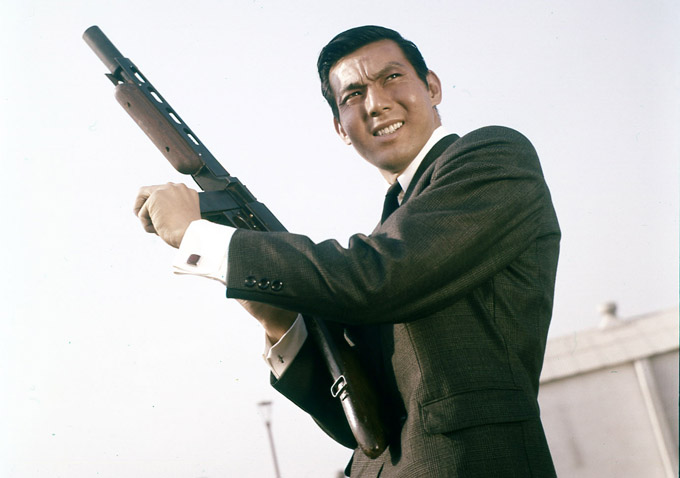 For a guy who’s hardly a household name, Seijun Suzuki sure has influenced a veritable who’s who of popular filmmakers. Watching this new video from Press Play, which examines the 92-year old director’s body of work, it’s actually quite striking to see how his signature flamboyant style has rubbed off on an entire new generation of younger filmmakers. It’s there in the splashy, theatrical violence of Quentin Tarantino, the neon-soaked strangeness of Nicolas Winding Refn (who included two of the Japanese director’s films in his Criterion Top 10), the arch artificiality of Wes Anderson and the sly, morose comedy of Jim Jarmusch, who affectionately pays tribute to one of the director’s most famous shots in “Ghost Dog: Way of the Samurai.” Although many of his films were initially seen as failures, Suzuki’s unhinged visual imagination and penchant for cleverly staged and often operatic violence remains an incalculable influence on postmodern cinema. If you’ve never seen a Suzuki flick before and you’re curious as to what all the fuss is about, this new video retrospective should help to give you a decent idea of what to expect.
For a guy who’s hardly a household name, Seijun Suzuki sure has influenced a veritable who’s who of popular filmmakers. Watching this new video from Press Play, which examines the 92-year old director’s body of work, it’s actually quite striking to see how his signature flamboyant style has rubbed off on an entire new generation of younger filmmakers. It’s there in the splashy, theatrical violence of Quentin Tarantino, the neon-soaked strangeness of Nicolas Winding Refn (who included two of the Japanese director’s films in his Criterion Top 10), the arch artificiality of Wes Anderson and the sly, morose comedy of Jim Jarmusch, who affectionately pays tribute to one of the director’s most famous shots in “Ghost Dog: Way of the Samurai.” Although many of his films were initially seen as failures, Suzuki’s unhinged visual imagination and penchant for cleverly staged and often operatic violence remains an incalculable influence on postmodern cinema. If you’ve never seen a Suzuki flick before and you’re curious as to what all the fuss is about, this new video retrospective should help to give you a decent idea of what to expect.
Born in Tokyo in 1923, Suzuki quickly became (in)famous for his refusal to storyboard his shots, opting instead to let his freaky, deranged ideas flow freely like a spout from a spicket. Anyone who has seen his early “Youth of the Beast” – more specifically, the sequence that involves whips, a screaming prostitute, a sicko Yakuza gangster and a violent sandstorm – knows exactly just how gloriously messed-up the director’s style can be. Suzuki’s oddball vision often put him at odds with Nikkatsu, Japan’s oldest and most reputed film studio, where he directed over forty pictures. Ironically, many of these films – including the totally bonkers “Tokyo Drifter” and “Branded to Kill,” which ultimately cost him his relationship with the studio – are his most weird and alienating, and also his most enjoyable. Love him or hate him, there’s no mistaking Mr. Suzuki’s films for the work of any other director. The video also touches on a number of other fascinating points, including the director’s working relationship with chimpmunk-faced leading man Joe Shishido, the financial failure of “Branded to Kill” and exactly how he got his start in the business.
Watch the video below. If you’re curious to see the director’s films in a more pristine format, some of Suzuki’s best movies – including “Youth of the Beast,” “Tokyo Drifter,” and “Branded to Kill” – are currently available through the Criterion Collection.






Been trying to play this video for the past couple of hours. WTF?